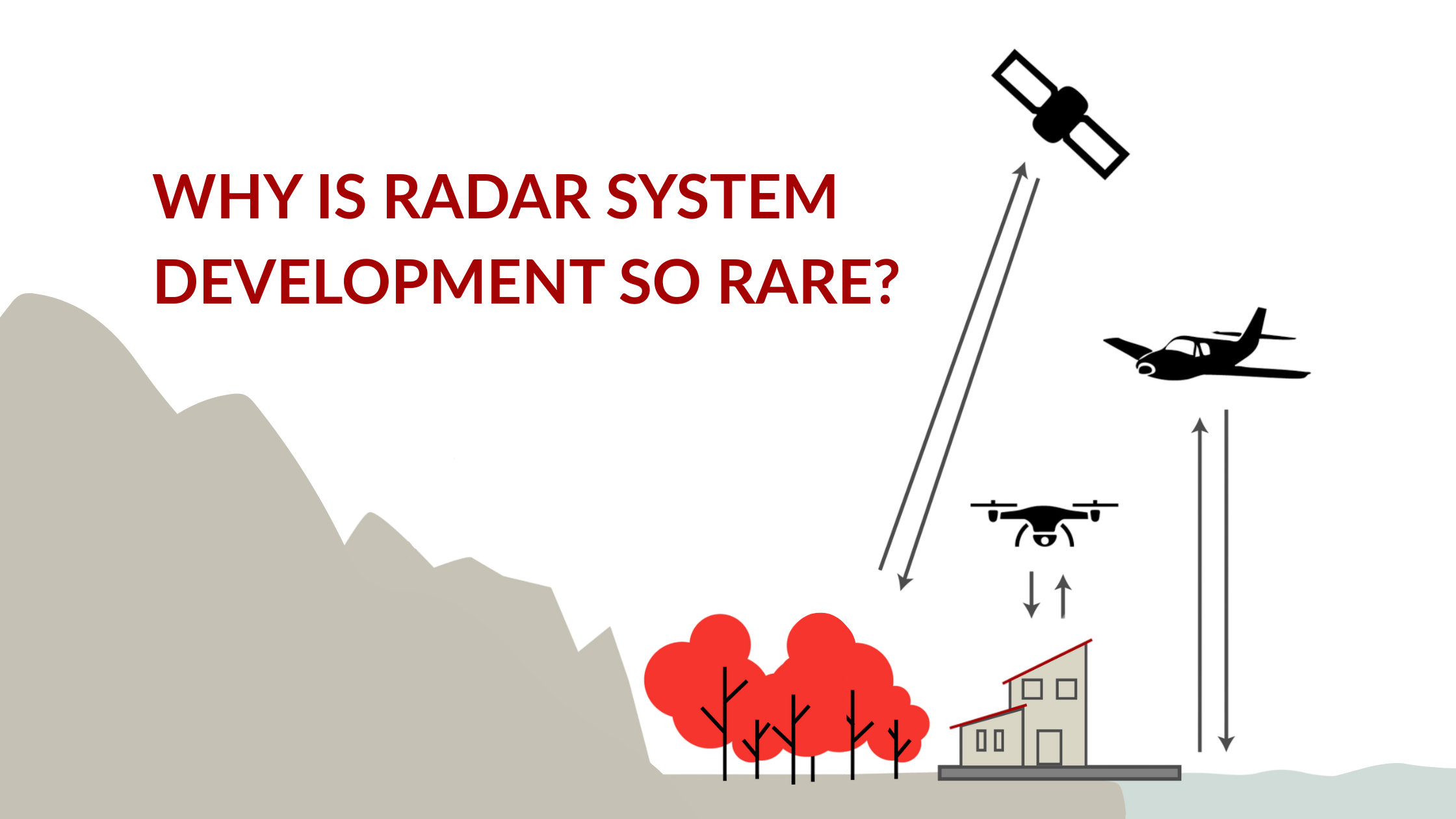
Mapping with Radar: Why So Few Can Do What We Do
Radar has earned a reputation in remote sensing for being among the most powerful and complex technologies to work with. While satellite radar systems have
As a geospatial services company based in western Canada, we’ve witnessed the heart-wrenching aftermath of wildfires on communities and environments. The emergency evacuations in Fort McMurray and the Okanagan stand as stark reminders of the lives uprooted and the environments scarred by these fires. These are not just statistics but real people and places we’ve known and cared for.
Today, we’re going to talk about the proactive role of geospatial technology and the companies supporting it in mitigating, monitoring, and recovering from wildfires. But before we do, let’s understand why the geospatial community is deeply committed to environmental protection. Our work, driven by data and problem-solving, is inherently focused on Earth’s systems. This fosters a deep passion for the climate, environment, and related issues. We’re technologists and outdoor enthusiasts with a sense of adventure, and we’re determined to preserve our environment for future generations.
As you read this, hundreds of active wildfires are burning in Canada and the USA.
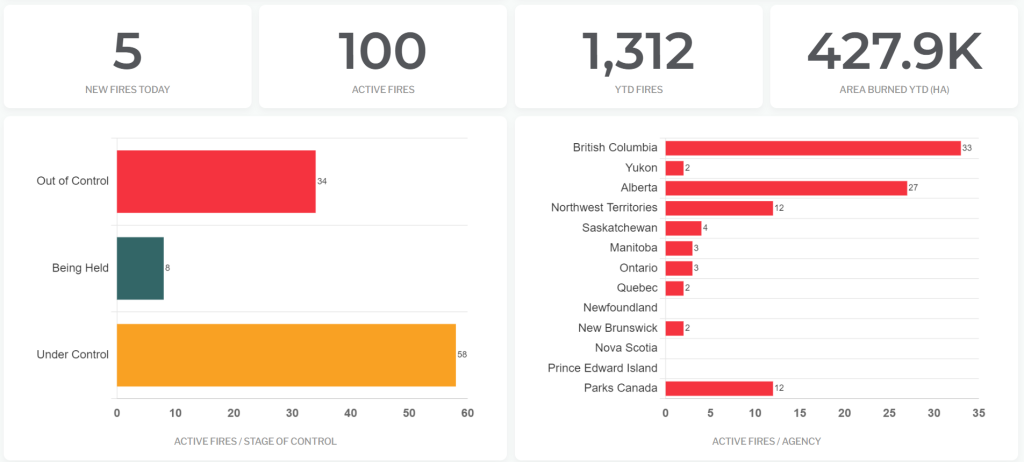
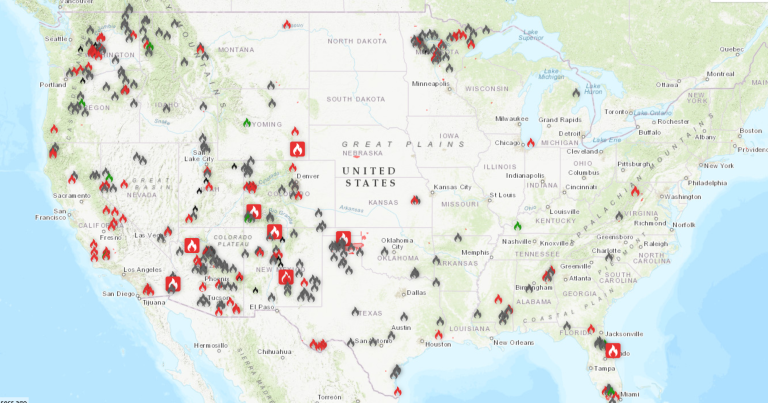
Canada’s 2023 fire season was one of the most destructive on record, with over 45 million acres burned and thousands displaced, including the entire city of Yellowknife. For comparative purposes, the total area burned in 2022 was 14 million acres. In response, the Canadian government has significantly increased its wildfire management budget, recognizing the critical role of early detection and predictive modeling.
Spatial technology enables us to take a proactive approach to wildfire management. We integrate diverse data sets—weather conditions, topography, fuel moisture, vegetation type, and fire history—to create comprehensive maps that identify high-risk areas and forecast wildfire behavior. We can identify areas at greatest risk by layering this information with the location of high-value resources such as critical habitat, infrastructure, and housing developments. This allows us to predict and prevent wildfires with unprecedented accuracy, ensuring that resources are allocated effectively and vulnerable areas are safeguarded as best they can.

Preparing Communities
Interactive maps and online platforms provide communities and residents with vital information about wildfire risks, evacuation routes, and fire-safe practices in a user-friendly way (because not everyone is map literate). This transparency fosters a collaborative approach to wildfire management, where government agencies, non-profit organizations, and local communities work together to enhance preparedness and resilience. By visualizing data and making it accessible, it empowers individuals to take proactive steps in safeguarding their homes and neighborhoods. FireSmart Canada is a program that engages communities through practical, effective, and science-based programs with tools to help them be better prepared when wildfire occurs.
Emergency Planning with Digital Twinning
The ability to predict fire behavior and spread through sophisticated modeling techniques allows us to anticipate the trajectory of fires, making it possible to protect lives and property more efficiently when a fire occurs. Companies like RUNWITHIT Synthetics help emergency response teams and municipalities create any city in a digital environment and simulate outcomes based on the risk scenario and information like a city’s population, infrastructure, businesses, technologies, policies, and investments that could impact a plan in an emergency. In essence, geospatial technologies help transform reactive firefighting into proactive management, minimizing the impact of wildfires (not to be confused with stopping the fire).
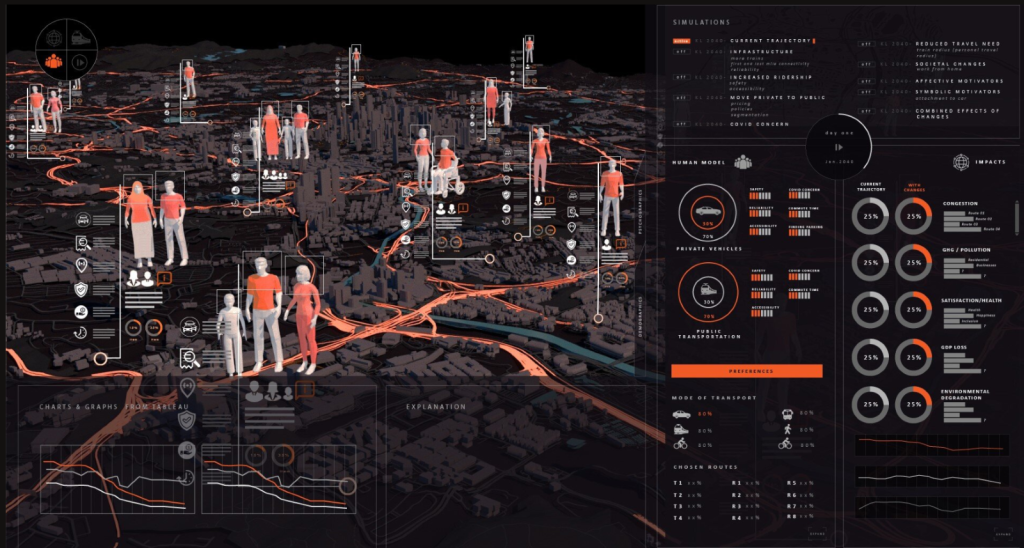
Thermal and infrared satellites provide crucial fire monitoring data in near real-time, but emerging technologies promise even greater capabilities. Companies like OroraTech are developing constellations of thermal imaging satellites to offer continuous, real-time fire detection services so that humans can avoid dangerous and affected areas to inspect the damage.
The Canadian Space Agency’s WildFireSat mission aims to provide daily imagery during peak burn periods, improving triaging and response strategies. These advancements in satellite technology, combined with aerial imaging and data acquisition, will further enhance our ability to detect, monitor, and manage wildfires. These technologies ensure the safety and well-being of those who bravely work on the front lines, providing essential support and protection in their challenging and often life-threatening duties.
The aftermath of a wildfire is just as critical as the initial response. With remote sensing and data processing technology, we can better evaluate vegetation health, soil erosion and watershed conditions, offering insights into the ecological repercussions of the fire. Post-fire recovery is studied by comparing images taken before and after the fire, which informs restoration projects, helping to prioritize areas with the highest ecological value or the greatest need for stabilization. By understanding the landscape’s response to fire, we can implement targeted reforestation and rehabilitation efforts, ensuring long-term ecological resilience and biodiversity.

From the Colorado State Forest Service’s Rehabilitation Program.
From predictive modeling and digital twinning to real-time satellite monitoring and post-fire recovery efforts, geospatial professionals and companies drive innovations that protect communities and preserve our natural landscapes. As wildfires continue to pose significant challenges, the geospatial community’s commitment and expertise are more critical than ever. By integrating cutting-edge tools and fostering collaborative efforts, we can create resilient environments and ensure a safer, more sustainable future.
From all of us at GNO-SYS, have a safe summer, follow fire-safe camping guidelines, and share your geospatial knowledge with others.

Radar has earned a reputation in remote sensing for being among the most powerful and complex technologies to work with. While satellite radar systems have
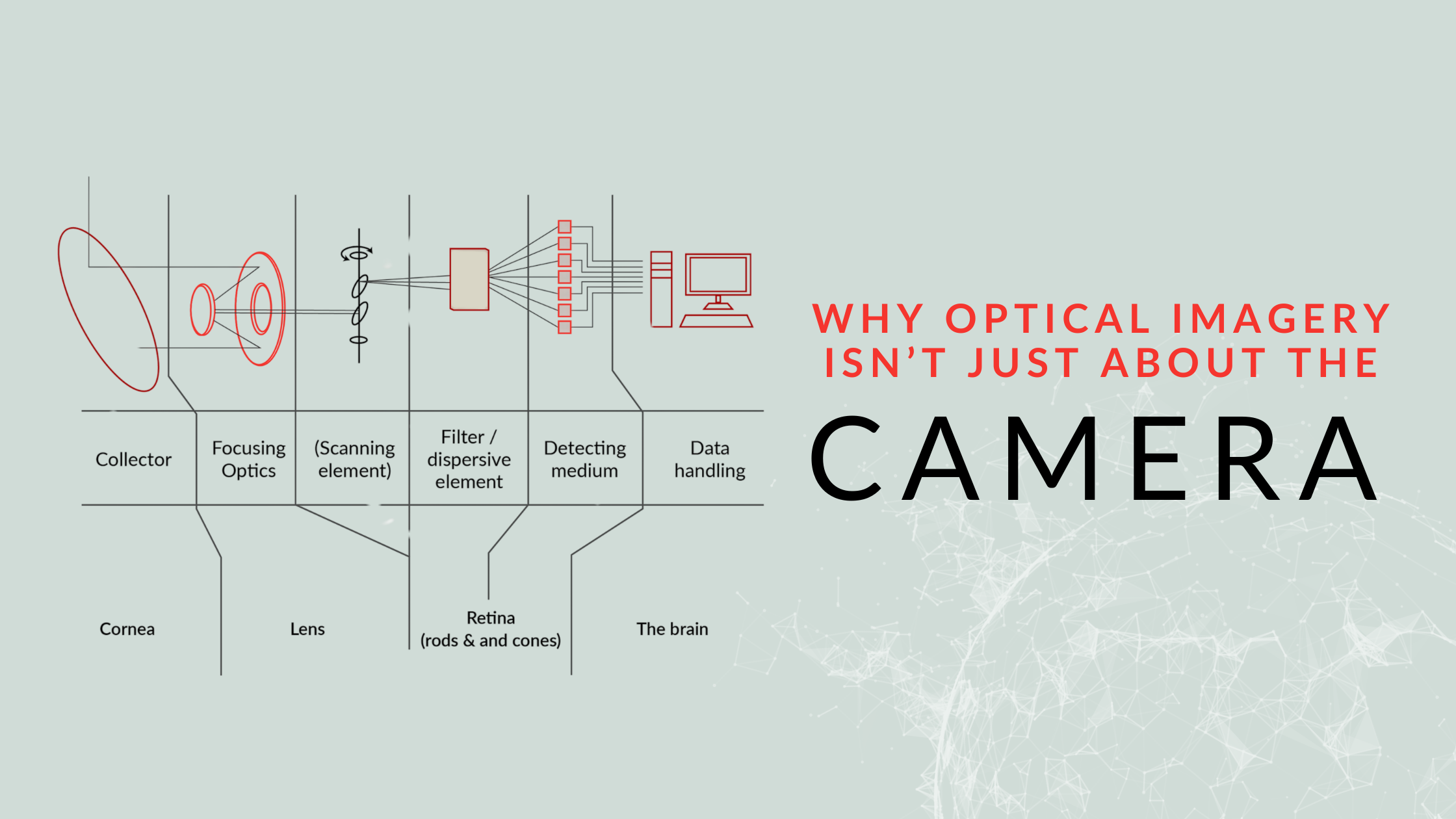
When we set out to develop a high-performance optical imaging system, we start where many do – testing commercial off-the-shelf cameras. The idea was simple:
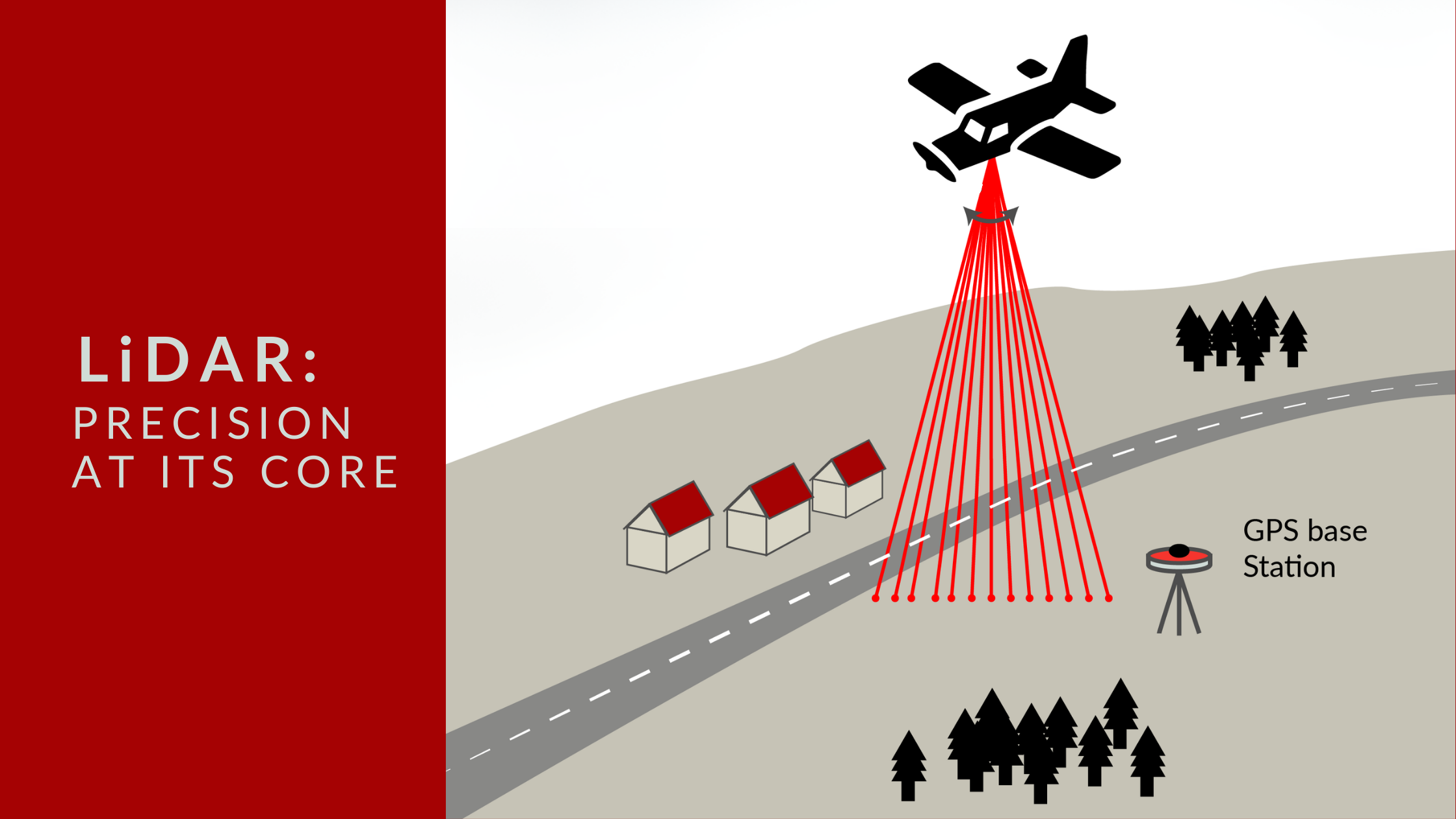
At GNO-SYS, we specialize in engineering LiDAR systems that deliver precise distance measurement and topographic mapping. Currently, our team is engaged in an exciting project to develop a custom LiDAR system tailored for a specialized application.